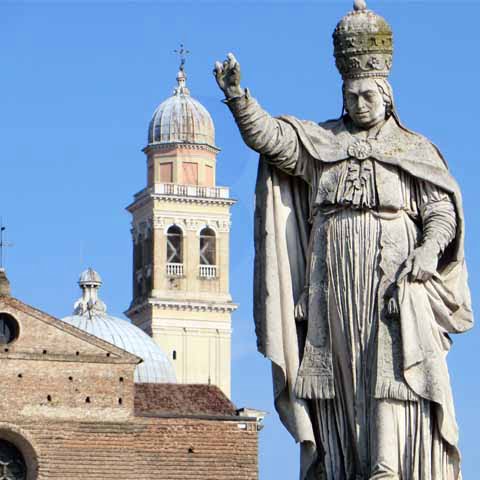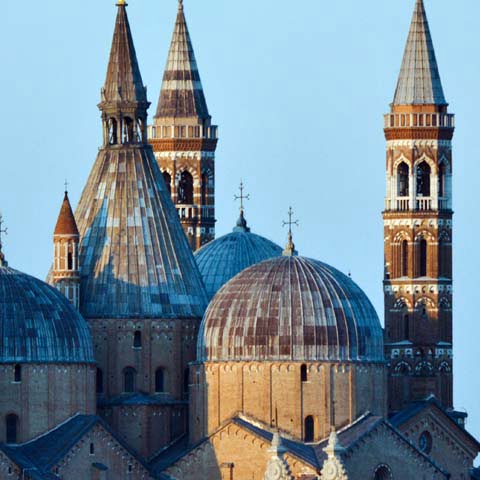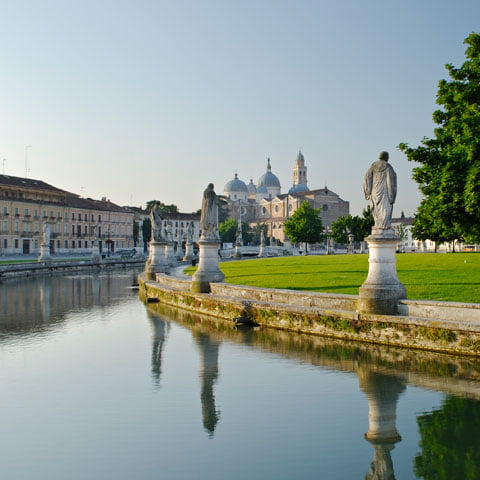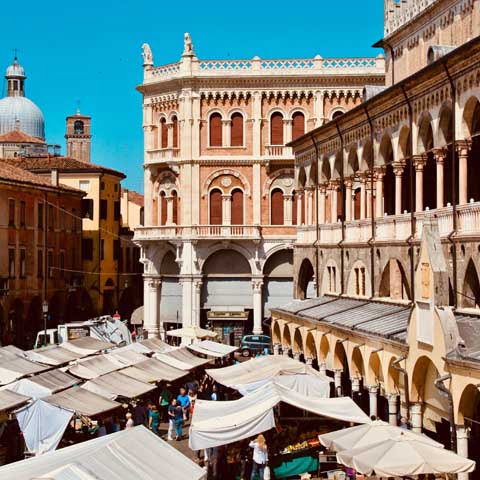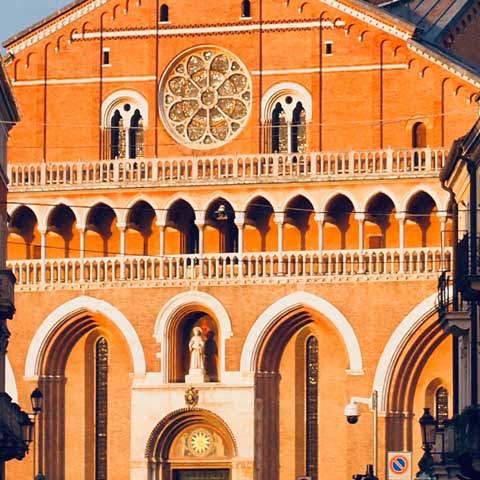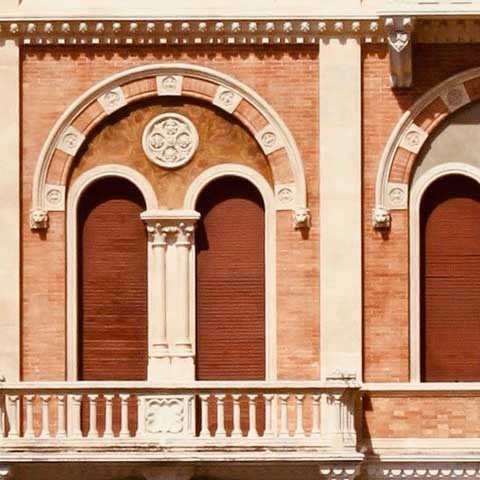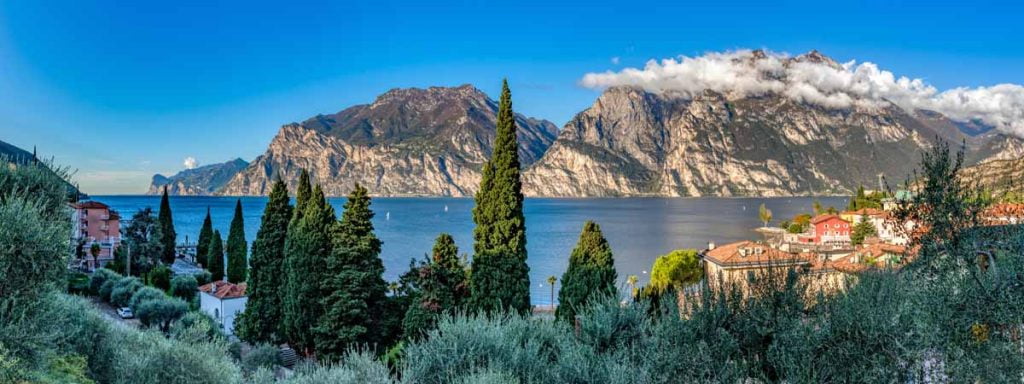Located less than an hour west of the city of Venice and less than an hour and a half east of Verona, the city of Padova is a truly fascinating stop for any traveler to make on their journey through Italy. Known in English as “Padua,” the city of Padova is among the oldest in Northern Italy, with millennia of history to its name. Located in the Veneto region and serving as the capital of the eponymous province, Padova is home to over 200,000 people and is one of the region’s key cities.
Padova’s history dates back to long before the Roman Empire was ever established, with local legends claiming that the city was founded by the Trojan prince Antenor in the year 1183 BC after the fall of Troy. While of course this is only a legend, archaeologists have proven that there were permanent settlements in the area dating all the way back to the tenth or eleventh centuries BCE.
Padova is a city of two distinct identities. Its first face, appropriate for such an ancient city, is one of history and preservation. The sheer number of historical landmarks that dot the city is astounding, and the city has managed to preserve a cultural identity all its own throughout the millennia. To this day, the center of the city retains many of its older, more historical buildings, and walking through the center feels like being thrust into an era long since lost to time, especially when compared with its more modern outskirts. On that note, Padova’s second face is one that looks toward the future and forever works to bring mankind forward into the next age. Padova has long been a city focused on education, academia, and the sciences, largely thanks to the famous University of Padova, founded all the way back in the year 1222. The university is the fifth oldest university in the world that remains in operation to this day, and some of the greatest minds in history have studied and taught there, including Copernicus and Galileo.
Nowadays, Padova features numerous culturally and historically relevant landmarks that help to weave the story of Italy’s heritage. Visitors to Padova can visit sites like the Scrovegni Chapel, also known as the Arena Chapel, which seems unassuming at first glance, but a peek inside reveals it as one of the most relevant art history sites in all of Italy. The interior of the chapel is entirely covered in fresco paintings by famed medieval artist Giotto. People who are interested in religious history should also make a trip to the famous Basilica of Saint Anthony. One of the most architecturally stunning sights to see in Padova, this massive shrine to Saint Anthony remains an important pilgrimage site to followers of the Catholic faith to this day.
Those less interested in religious history and more interested in academia and culture will still find plenty to do in Padova, however. The University of Padova makes for an impressive visit, with historical buildings such as Palazzo del Bo, which is open for the public to visit. Here, one can catch a glimpse of the world’s oldest anatomical theater. Also, at the university, one can find the world’s oldest botanical garden which, while not the most expansive or complete botanical garden in the world, began the tradition of housing plants for study and public viewership. Over its long history, the university has amassed impressive collections of art and historic artifacts that can be admired at eleven museums overseen by the university. There are also numerous other museums in the city of Padova that allow visitors a glimpse into the city’s storied past.
Visitors to the Veneto region should endeavor to try and make a stop at Padova. The city is easily accessible by train from both Verona and Venice, as well as from other parts of Italy such as Florence or Bologna. If one is eager to get out and be active, one can also reach the city by bike. The land around Padova is delightfully flat and the climate mild, so the city makes an excellent biking area.
GEOGRAPHY & CLIMATE
Located on the Bacchiglione River, the city of Padova enjoys a subtropical climate characteristic of Northern Italy. The temperature is generally mild, though it tends to spike to over 85 degrees Fahrenheit at times in the summer. The winters rarely reach below freezing for extended periods, though they do approach those temperatures. Padova has a particularly humid climate, however, and even during its driest months there is generally still rainfall. Visitors should remember to pack raincoats and umbrellas due to the chance of unexpected showers.
The geography around Padova is generally quite flat. Though regions further to the north are quite mountainous, the city is located directly in the center of what is known as the Venetian Plain. This vast expanse of grassland is broken up only by a few low hills and is a perfect location for cross country walks and bike rides. South of the city lie the picturesque Euganean Hills.
WHEN IN PADUA
Visitors to Padova should endeavor to take in as much of the history of the city as they possibly can. The opportunity to learn offered by a city so old and ancient as Padova should not be passed up.
People that are interested in the religious history of Padova should make an effort to visit the aforementioned Scrovegni Chapel and the Basilica of Saint Anthony, but that is not all that the city has to offer. Neither the Scrovegni Chapel, nor the Basilica, are considered the ‘main chapel’ of Padova. That honor falls to the aptly named Duomo di Padova, or the Padua Cathedral. This cathedral, though unassuming from the outside, is an architectural marvel on the inside with massive religious frescoes found in the baptistry by the artist Giusto de’ Menabuoi.
In the center of the town one can also find the Abbey of Santa Giustina. This Benedictine abbey dates back to the tenth century and is attached to the Basilica of Santa Giustina, which dates even further back to the sixth century. Here, many ancient works of religious art and other Catholic artifacts are open for public viewing.
Those who visit Padova can also find the Church of the Eremitani, or the ‘Church of the Hermits.’ This thirteenth century Augustinian structure barely escaped destruction in World War II, and much of its interior remains damaged, though the tragedy has lent a certain melancholic beauty to the remaining paintings and artwork held within. Indeed, most of the frescoes were destroyed in Allied bombings on the nearby Axis headquarters, but some paintings, such as The Assumption of the Virgin and The Martyrdom of Saint Christopher still remain.
For those less interested in religious history, however, there are still many places in Padova to explore. There is, of course, the university, which has no end of things to see and experience, but there are also several prominent museums scattered throughout Padova. One in particular, the Musei Civici di Padova, is a complex of historical buildings and sites. Indeed, this is where one will find the aforementioned Scrovegni Chapel, for example. However, this museum also contains a number of archaeological collections for the public to view, dating back to eras before and during the Roman Empire. Visitors interested in ancient history should not pass up the opportunity to see such valuable historical artifacts.
Other museums to visit in Padova include places like the Museo dell’Osservatorio Astronomico di Padova, or the Museum of the Astronomical Observatory of Padua. This tower observatory began its life as the tower of a medieval castle, but was transformed into an observatory in the year 1767. Here, one can view the sorts of tools and instruments used by past astronomers as they studied the heavens.
Also found in Padova is the MUSME. Known more formally as the Museo di Storia della Medicina, or the Museum of the History of Medicine in Padova, this modern museum offers a plethora of displays and stations that one can interact with to get a better understanding of medicine. The museum is aimed at both adults and children, and people of all ages can have fun with the interactive displays and setups as they learn about anatomy, the development of pharmacology, surgery, and the history of medical education.
Visitors to Padova should also make an effort to visit the Orto Botanico, or the Botanical Gardens. The gardens in Padova are the very first of their kind, dating back centuries, which started the whole tradition of keeping plants for study and viewership. While not the most complete or expansive of botanical collections, it’s still a delightful experience for all ages.
For visitors who are not as interested in academia, religion, or history, however, Padova is still a location with plenty to do. There are four main piazze around the city where one can go to shop or sit down at a café and have a cup of coffee or a nice apéritif. These piazze include Piazza dei Signori, Piazza delle Erbe, Piazza Eremitani, and Piazza della Frutta.
Also found in Padova is a series of historical markets located in the piazze and beneath the massive Palazzo della Ragione. The markets are a tradition kept alive by the locals for centuries. Here, visitors can purchase any number of locally made goods, regional foods ranging from local fishes, meats, cheeses, and vegetables, and much more.
Finally, visitors to Padova should make sure that they see the famous Prato della Valle. This enormous public square, known as Il Prato by the locals, is a massive public park in the center of the city ringed by a moat and surrounded by statues of famous historical Padovans. Locals from the university come here to study or sunbathe on the grass, and when night falls the citizens play music or enjoy a nice stroll after their evening meal.
Though not as famous as nearby Venice or Verona, Padova’s impressive wealth of history and art makes this charming city a must-see during a trip to Northern Italy. From the magnificence of the Scrovegni Chapel and the famed Basilica of Saint Anthony to the many fascinating museums, Padova leaves a lasting impression on all who visit.
Don't just see Italy, live it.
Your dream trip to Italy has never been closer
No more endlessly scrolling travel sites. Our travel experts will craft the perfect, one-of-a-kind trip just for you.

300+
DESTINATIONS
We offer more Italian destinations than any travel site. Do and see more with Trips 2 Italy.
1 (of a kind)
ITINERARIES
Because your dream trip to Italy should be designed for you, not for the masses.
100%
PEACE OF MIND
From flights and accommodations, to food and activities - we take care of every detail.
